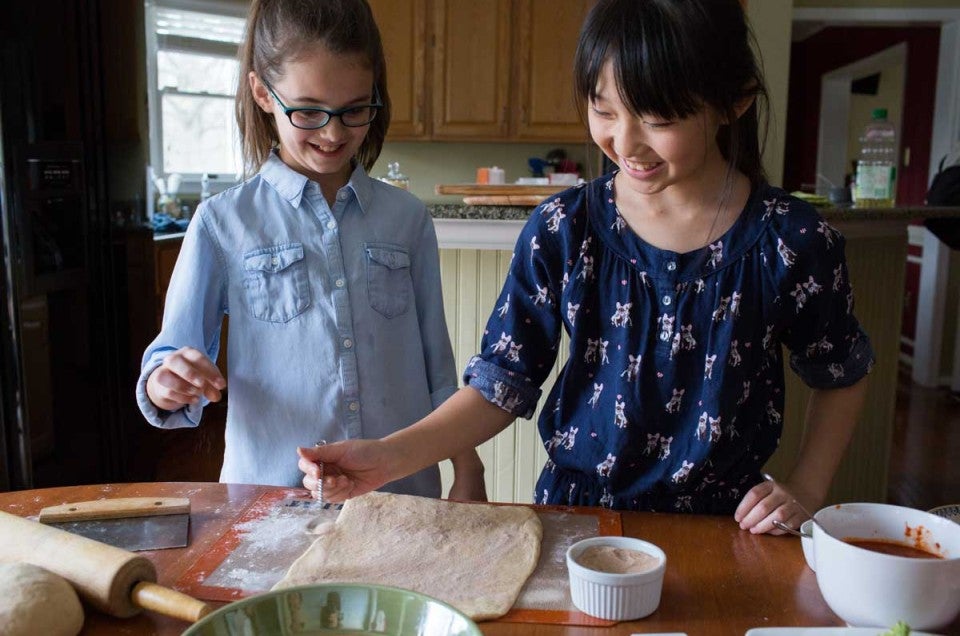


A lifelong passion for baking often starts at a young age. And here at King Arthur, we love kid bakers. Their expansive creativity, unfiltered delight, and deep curiosity are all a reminder of why baking is so special. “Kids are so excited when they’re baking,” says Michelle Kupiec from King Arthur’s Baking School. “They just love the process, and at the end, they have something delicious to eat.”
With young bakers in mind, Michelle developed curriculums for several upcoming virtual Kids Camp classes at our Baking School, each with two available sessions: one for kids aged 8 to 12 and another for kids aged 13 to 17. The goal of these classes is for new bakers to learn and develop their skills in the kitchen, making everything from basic muffins to colorful garden focaccia.
“With baking, kids are learning a lifelong skill. It involves so many different things — like math, science, and creativity — that serve them well beyond the kitchen,” she says.
For young bakers eager to start kneading and mixing, Michelle has laid out key lessons they should learn and recipes to practice, all inspired by the five-day curriculums she has planned for Kids Camp classes.
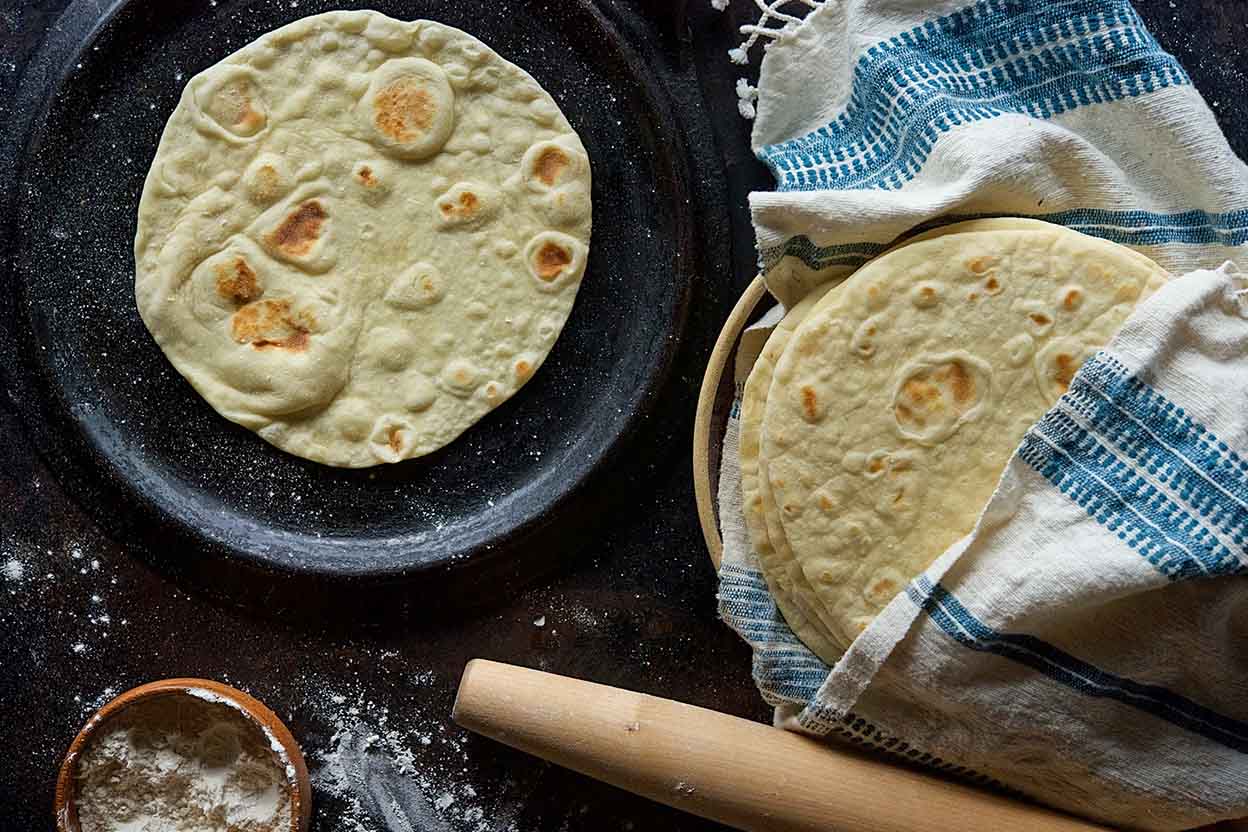
Flour is the foundation for nearly all baking, so it makes sense to start by learning just what it is. Michelle advises making a super-simple flour-based recipe like flatbread to begin a kid's baking journey. There’s little kneading or proofing involved, which means kids can focus on baking with gluten: specifically, how to develop it with basic kneading for a chewy flatbread.
Flatbreads are also the perfect place to start because there’s no pressure! “The shape that you make is your unique shape,” says Michelle. “Just have fun with it.”
What to bake: Simple Tortillas
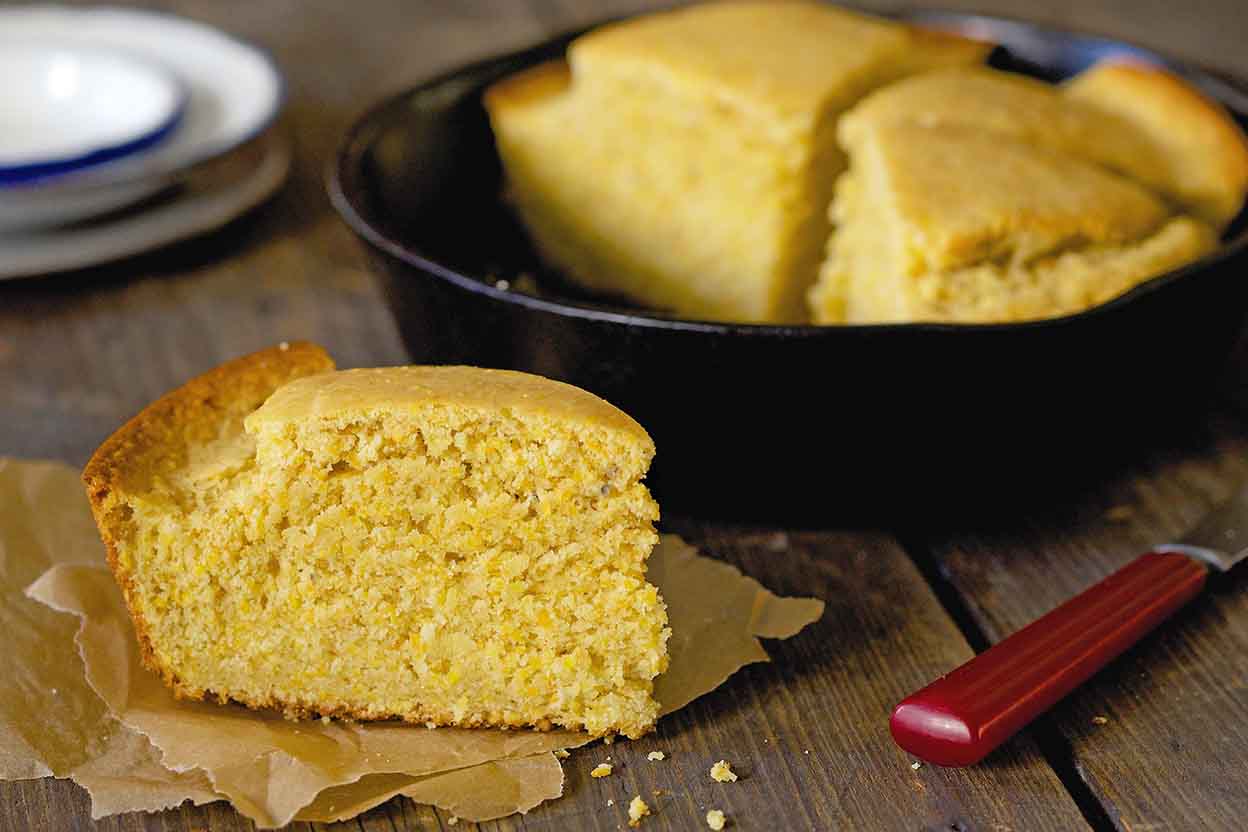
After learning the basics of baking with gluten, Michelle suggests stepping things up a notch by making quick breads. They’re leavened with baking soda or baking powder, two important ingredients to understand in baking. Kids can learn the difference between these leaveners and the science behind how they work (for example, baking soda requires an acid to properly activate, while baking powder doesn't), then try them out in a recipe.
Quick breads are also an excellent opportunity to build on the previous lesson. While flatbreads require some gluten development for a pleasantly chewy texture, quick breads demand gluten be developed as little as possible so they’ll have a tender texture instead. Michelle says this is a great chance to learn “not to overmix your baked goods so there’s not too much gluten development. Otherwise, they’ll get tough and chewy.” She advises kids to go carefully, watching their batter and mixing “just until your flour disappears.”
What to bake: Cornbread
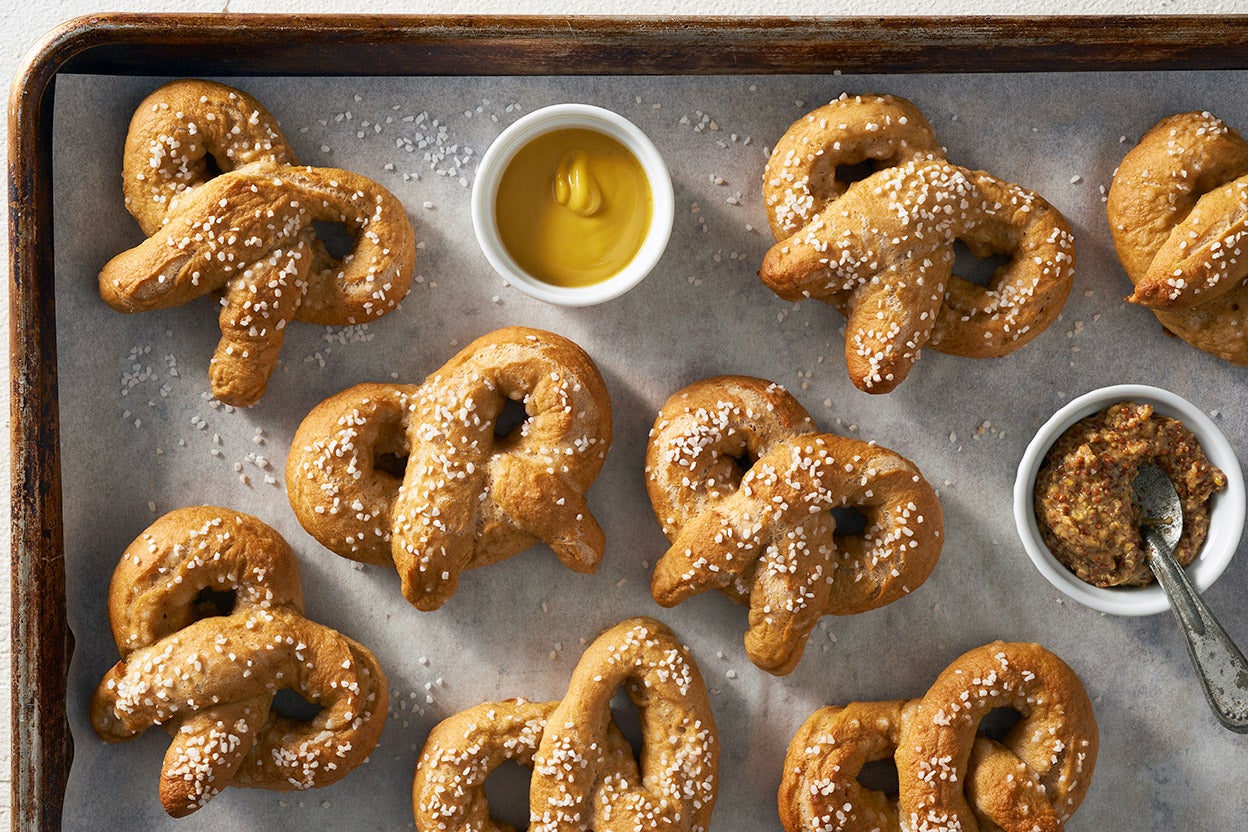
With flatbreads and quick breads in the rearview, it’s time to move on to standard yeast breads. These breads continue the theme of gluten in baked goods — how to develop it through proper kneading to achieve the desired texture — and offer some new skills like proofing and shaping.
One key element to focus on here is how to gauge if bread dough is fully kneaded. Michelle likes to teach the press test, a hands-on way for kids to evaluate their dough. “Use your fingers to press into the dough, testing to see if it has enough bounce," she advises. "Your dough should feel bouncy and smooth, and it should spring back when you press on it.” (Here's a video of the press test in action.)
What to bake: Pretzels
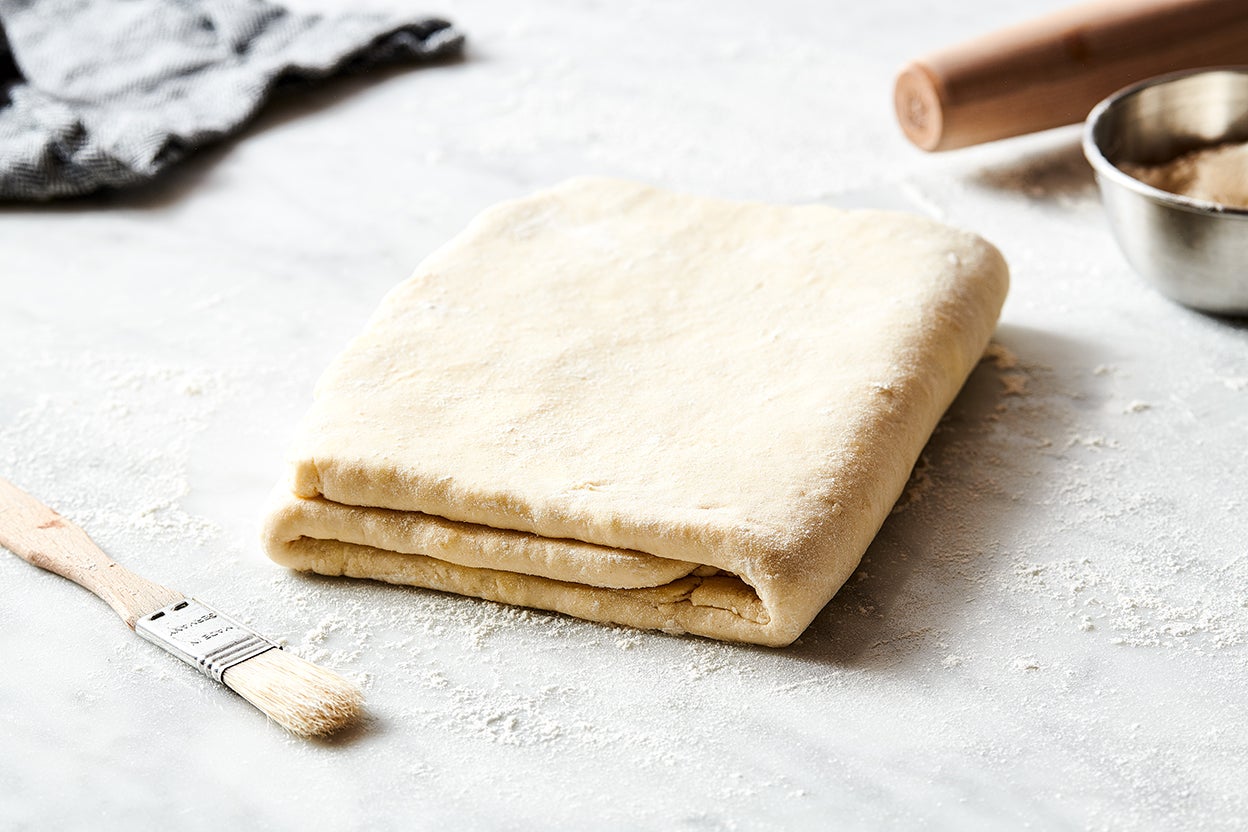
Time to learn about a new baking style: pastry. The secret to flaky pie crust and other pastries comes down to two main components: dough handling and ingredient temperature.
Whereas the previous lesson focused on how to develop gluten for a chewy, springy bread, this lesson examines the flip-side of that concept: avoiding gluten development for a tender texture, similar to the quick breads in Lesson 2. “Like with quick breads,” says Michelle, “you don’t want to overmix or overhandle the dough because you don’t want to make tough pastry.”
This lesson also zeroes in on the importance of ingredient temperature, such as how warm butter can derail the flakiness of a pie crust. “Keep everything cold,” stresses Michelle. “If your dough starts to become too warm while handling it, stick it in the fridge for 5 or 10 minutes to cool down again before continuing to bake.”
What to bake: Blitz Puff Pastry
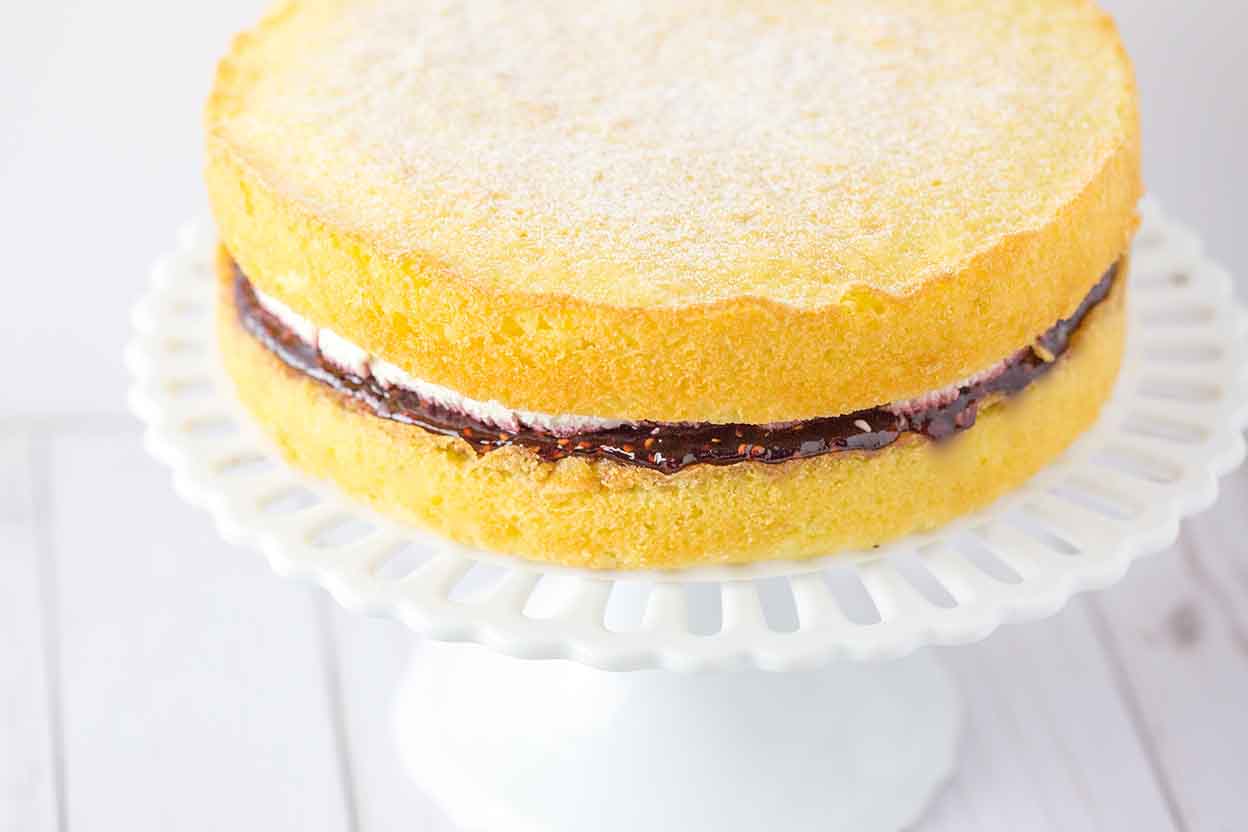
The final lesson is also a celebration: cake! Kids can take everything they’ve learned about gluten, mixing, ingredient temperature, and sensory measurement, then use it to bake a cake.
While baking, they can practice gentle mixing to ensure a tender texture; making sure their butter is at the correct temperature (in this case, it should be room temperature); and using their eyes, nose, and hands to test if their cake is fully baked. (Here are 5 ways to check if a cake is done baking.) And finally, they’ll learn one important secret to success: “Make sure the cake is totally cool before you assemble or decorate it!” cautions Michelle.
What to bake: Victoria Sandwich Cake
For a full dive into these lessons, consider signing up for one of the virtual Kids Camp classes the King Arthur Baking School is hosting online all summer long.
Cover photo by Julia A. Reed

